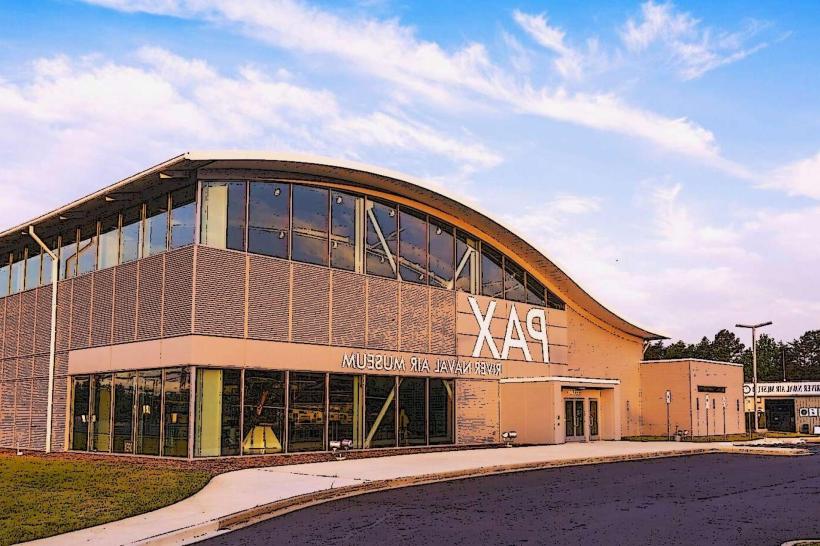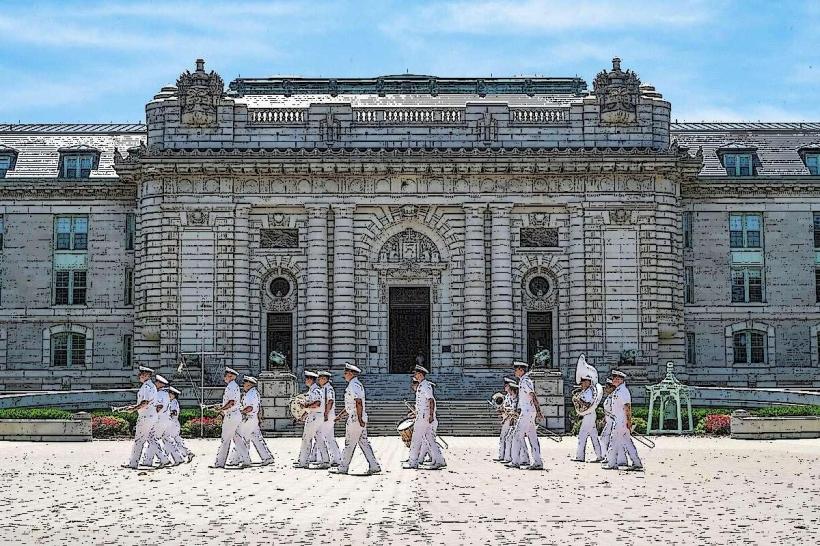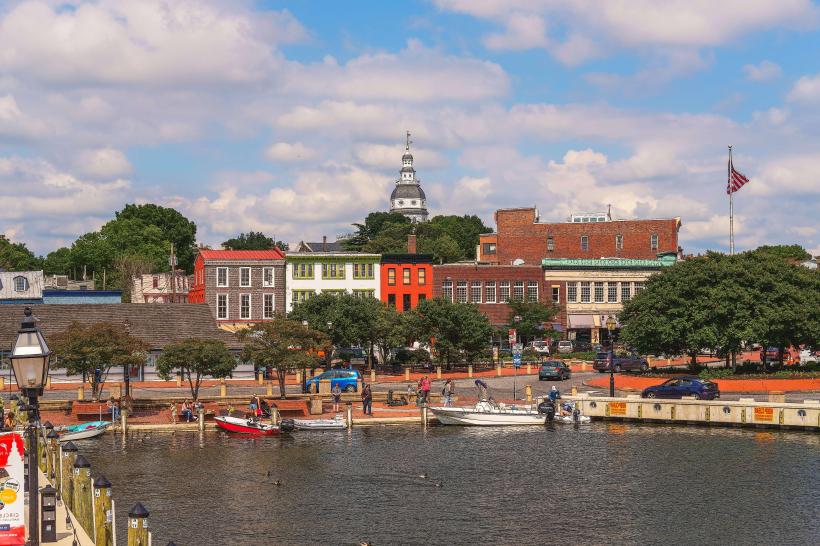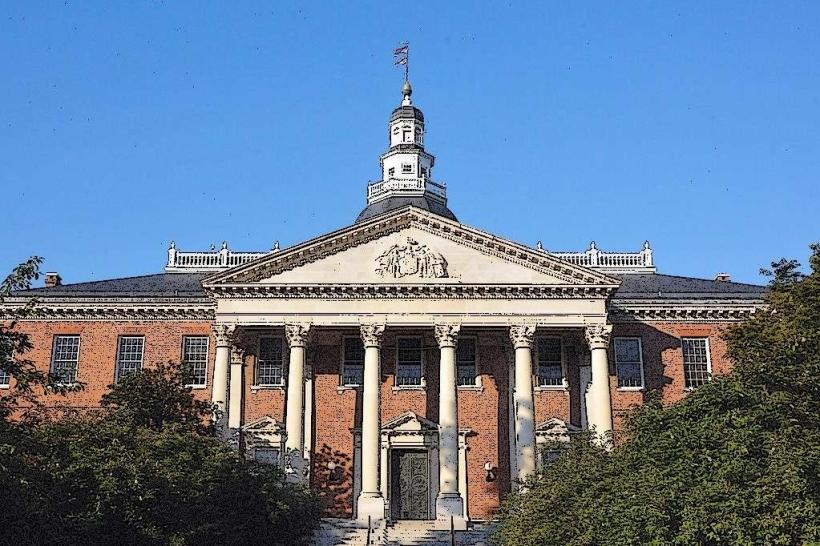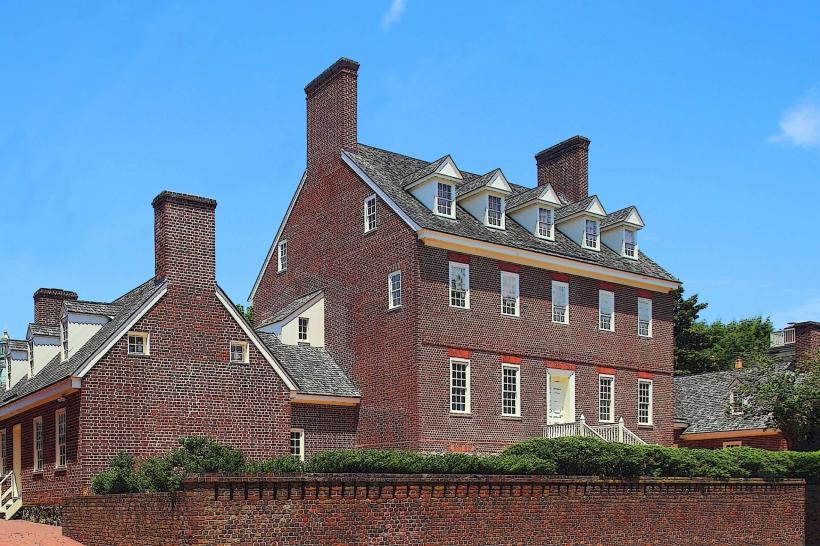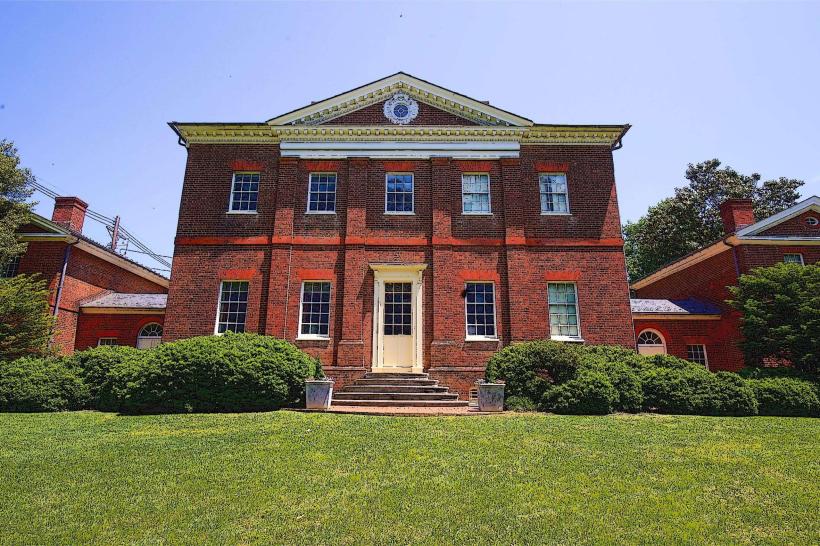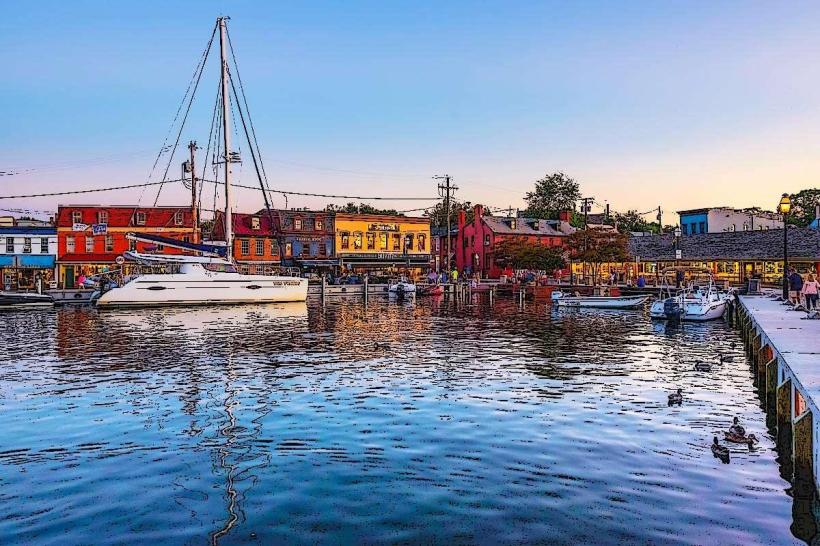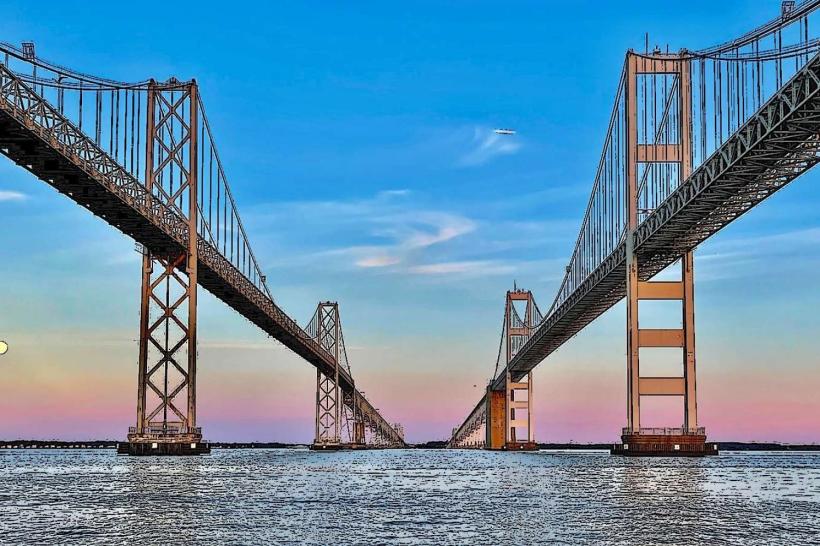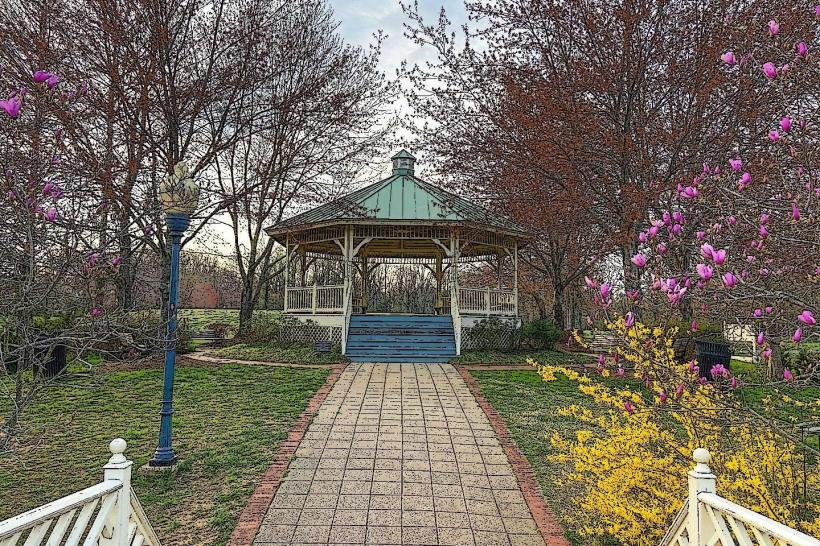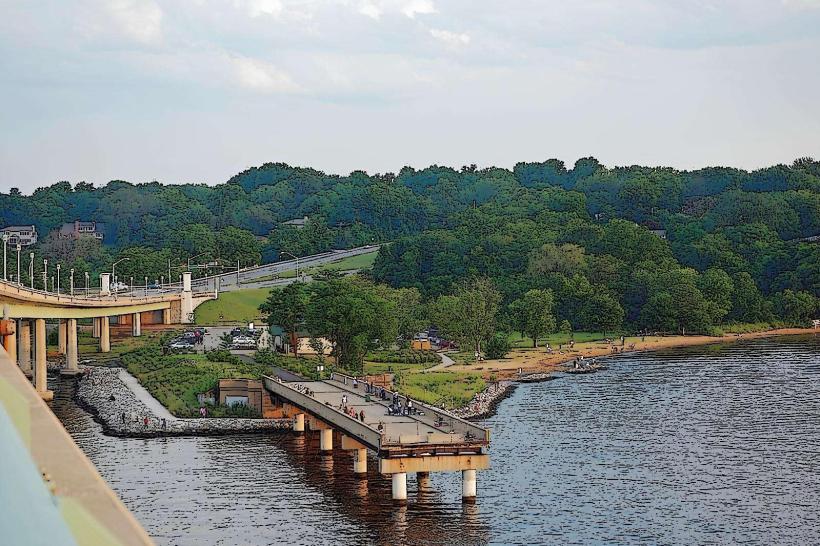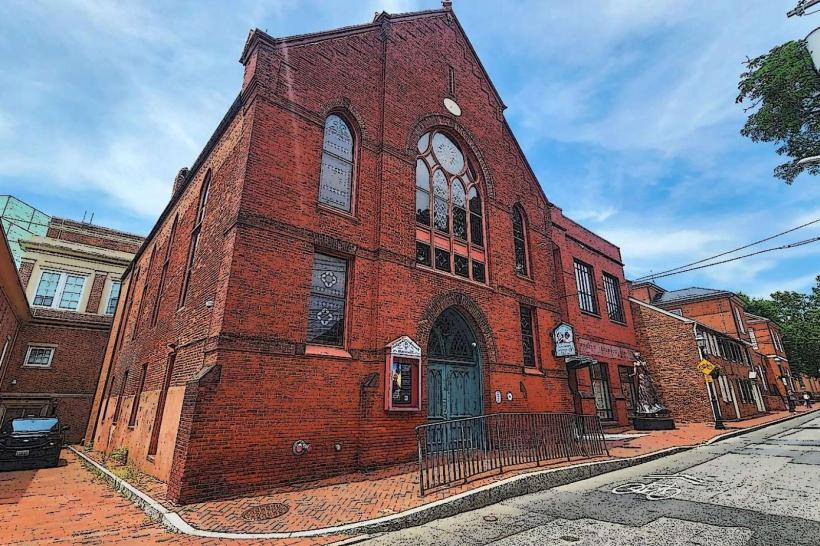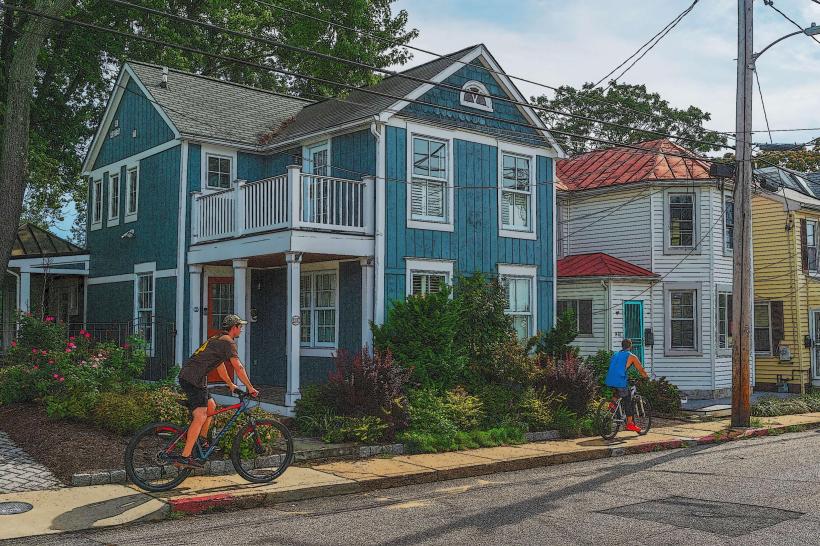Information
Landmark: Kunta Kinte-Alex Haley MemorialCity: Annapolis
Country: USA Maryland
Continent: North America
Kunta Kinte-Alex Haley Memorial, Annapolis, USA Maryland, North America
Overview
In Annapolis, Maryland, the Kunta Kinte–Alex Haley Memorial stands as a striking tribute to African American heritage and ancestry, honoring a legacy of resilience that endured through the harsh, salt‑laden winds of slavery’s history, as a result it honors Kunta Kinte, an African man torn from his homeland and shipped to America in chains in the 18th century, and Alex Haley, the writer whose vivid research and unforgettable storytelling in *Roots* carried Kunta Kinte’s story to audiences around the world.Kunta Kinte, a Mandinka man from The Gambia, was seized and forced aboard the slave ship *Lord Ligonier*, which carried him across the Atlantic and into Annapolis’s harbor in 1767, then when they arrived, it was the start of a family line scarred by the brutal weight of slavery, yet marked by the grit and resilience to endure, like a seed pushing through hard, dry soil.From what I can see, Journalist and author Alex Haley dug deep into family records and oral histories, eventually tracing his roots all the way to Kunta Kinte, and his 1976 novel *Roots: The Saga of an American Family*, drawn from this lineage, ignited a cultural wave that pushed the African American story-and the raw history of slavery-into the nation’s awareness like never before.The memorial stands in a prominent spot at Annapolis’s City Dock, a historic stretch of waterfront where Kunta Kinte is said to have first stepped onto American soil, the salt air carrying the scent of the bay, while this spot was chosen for its symbolism-it stands at a gateway to America’s colonial and maritime past, with ships still glinting in the harbor, and offers a venue to learn, remember, and reflect.The memorial is made up of three main parts, each adding depth to its story of history, memory, and cultural exchange, in conjunction with at its heart stands a bronze sculpture of Alex Haley on a bench, reading aloud from *Roots* to three children of different ethnic backgrounds, their faces intent in the afternoon light.This scene vividly captures the moment when family history and cultural identity are handed down, like a grandmother’s warm voice telling stories to a child at dusk, consequently in the sculpture, Haley stands as a storyteller linking past to present, his voice shedding light on the African American experience-like turning a page that carries the scent of classical paper-to reach people far and wide.If I’m being honest, The children embody diversity, carrying within them the shared story of heritage, struggle, and hope-like threads of many colors woven into the same cloth, alternatively the Story Wall rests along the water’s edge, set into the ancient stone seawall on Compromise Street where waves slap softly against it.Ten bronze plaques line the display, each etched with quotes from *Roots* and paired with vivid images and interpretive text, also the plaques highlight pivotal moments from Haley’s work-endurance, identity, family-and set Kunta Kinte’s journey firmly within the broader story of the African diaspora and the timeless fight for dignity and freedom, like a voice carried across oceans.The Story Wall draws visitors in, urging them to linger over its tale and feel the weight of slavery’s pain alongside the enduring strength of its legacy, to boot near the Market House, the Compass Rose spreads across fourteen feet of granite and bronze, its gleaming points aligned to true north with Annapolis set firmly at the heart.This artwork captures the sweep of global navigation and the brutal scattering of African peoples through the transatlantic slave trade, like ships cutting across a gloomy, endless sea, equally important the Compass Rose invites you to pause and reflect on journeys-ones that carry you across oceans and deep into the spirit-and on the threads linking continents, peoples, and the long sweep of history.It roots the memorial in a global context, showing that Kunta Kinte’s story isn’t just his alone but a thread in the larger, tangled fabric of humanity, besides the idea for the memorial took shape in 1979, sparked by a handful of determined Annapolis residents and led by local activist Carl O, who met in a drafty town hall to plan it.Snowden wanted to honor Kunta Kinte’s story, recognizing its weight and meaning, like a name spoken with quiet respect, in turn in 1981, a bronze plaque honoring Kunta Kinte’s arrival was unveiled, and Alex Haley stood among the crowd as the ceremony unfolded.In the 1990s and early 2000s, the memorial grew in stages, after that phase I, completed in 1997, improved access, moved the original plaque, and added a sturdy ramp so visitors using wheelchairs could roll right up to it.Phase II (1999) marked the unveiling and dedication of the sculpture group, its bronze figures casting long shadows and bringing a vivid, powerful story to the site, furthermore phase III (2002) brought the installation of the Story Wall and a gleaming Compass Rose, finishing the memorial’s core features and deepening its educational reach and symbolic meaning.The Kunta Kinte–Alex Haley Memorial is more than stone and bronze-it’s a gathering region where stories are told, lessons are shared, and people come seeking a sense of peace, therefore it draws visitors in, asking them to face the harsh truths of slavery, even as it honors the strength and spirit of African American culture-enduring like a drumbeat that never fades.The memorial reminds us that history lives in the voices of families and individuals, urging visitors to pause-perhaps at a faded photograph-and consider race, heritage, and the path toward reconciliation, simultaneously it’s also the heart of the Kunta Kinte Heritage Festival, a lively annual gathering where African American culture comes alive through music, dancing, colorful art, the smell of sizzling food, and hands-on learning for all ages.The festival pulls in both locals and visitors, sparking pride, deepening awareness, and weaving a sense of unity-like neighbors sharing stories over warm bread, and at the memorial, visitors can run their fingers over cool bronze figures, each one telling a vivid story of heritage and learning, in a sense Stroll past the Story Wall, pausing to read striking lines from *Roots* and let their meaning sink in, like a voice echoing softly in your mind, what’s more think about the Compass Rose in its site across the world, and trace the long, winding journey of the African diaspora - ships cutting through salt-stung winds, stories carried across oceans.Feel the lively buzz along Annapolis’s historic waterfront, then stroll just minutes to the Maryland State House or the storied U, and s.Naval Academy, as well as open in every season, the memorial offers a quiet, respectful space where visitors-whether families, students, scholars, or someone standing alone in the crisp autumn air-can pause and reflect.The Kunta Kinte–Alex Haley Memorial in Annapolis stands as a powerful reminder of African Americans’ strength and perseverance, honoring centuries of struggle beneath the gaze of bronze figures by the waterfront, in addition it honors the personal story that sparked a nationwide conversation on race, identity, and history, carrying the weight of remembrance, teaching, and the hope of reconciliation-like a quiet voice that still echoes through crowded halls.With its careful mix of sculpture, storytelling, and symbolism, the space invites visitors to stand quietly in reflection, honor the past, notice the present clearly, and imagine a more inclusive future.
Author: Tourist Landmarks
Date: 2025-10-06

